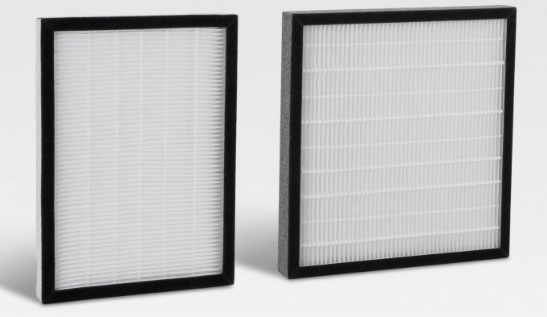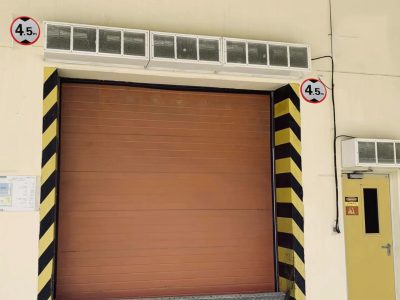팬 코일 장치 (FCU), HVAC 시스템에서 최종 에어컨의 핵심 구성 요소로, provides precise temperature regulation and comfortable ambient temperature for buildings, rooms and other places through efficient indoor air circulation and heat exchange. 이 기사에서, we will analyze its technical principles, application scenarios and cutting-edge trends to help you fully grasp this key equipment!

Working Principle of Fan Coil
How it works
Recirculation of air: The indoor air enters into the FCU through the air outlet, and the motor rotation drives the impeller to send this air which needs to lower or raise the temperature to the heat exchanger (hot/cold water or refrigerant), this treated air is sent to the indoor through the air outlet.
Temperature adjustment: Installation of a room thermostat with adjustable air speed and control of the heating and cooling modes on the wall or in the location where the desired temperature is to be achieved. Adjust the operation mode of the FCU according to the desired temperature setting.

Heat exchange type
Water System: It can be classified into two types based on different configurations of the supply and return pipe systems: the 2-pipe system and the 4-pipe system.
2-Pipe System: Consists of 1 supply pipe and 1 return pipe. Cold water is supplied for cooling purposes, and hot water is supplied for heating purposes, with the supply pipeline switched via valves.
4-Pipe System: Comprises 2 supply pipes (cold water supply and hot water supply) 그리고 2 return pipes (cold water return and hot water return). The cold and hot water pipelines operate independently, enabling simultaneous supply of both cold and hot water. The supply of cold and hot water is controlled by electric valves.
AC fan coil unit vs EC fan coil unit
Fan Motors: AC motors (alternating current motors) or EC motors (electronically commutated DC motors)
AC Motors
- Working Principle: AC motors are driven by a rotating magnetic field generated by alternating current. Stator windings are supplied with AC power, and the rotor rotates under the force of the magnetic field.
- 에너지 효율: AC motors have a slip rate during operation, leading to significant energy loss. Their efficiency typically ranges from 60% to 75%.
- Speed Regulation Performance: AC motors require complex speed control methods, with a limited speed adjustment range, low precision, and complicated control mechanisms.
- Control Method: AC motor control is relatively simple, generally using contactors, relays, 등., to control start/stop and speed regulation
EC Motors
- Working Principle: EC motors are brushless DC motors that replace mechanical commutators with electronic commutators. They switch the current direction in the windings based on signals from position sensors to drive motor rotation.
- 에너지 효율: Through precise electronic control, EC motors can operate efficiently under different working conditions, achieving an efficiency of 80% to 90% with significant energy-saving effects.
- Speed Regulation Performance: EC motors can easily achieve wide-range and high-precision speed regulation by adjusting the input voltage, meeting the needs of various working conditions.
- Control Method: EC motors can be connected to intelligent control systems to enable functions such as remote monitoring and automatic adjustment, facilitating building automation management.
Heat Exchanger:
Uses copper tubes with high heat transfer coefficient as the base tubes, and is equipped with aluminum fins with high thermal conductivity to increase the heat dissipation area.
Structural Composition
Mainly composed of copper tubes and corrugated aluminum fins, which are combined through a hydraulic tube expanding process.
Working Principle
When hot or chilled water flows through the copper tubes, it exchanges heat with the air outside the tubes. The fan drives air to flow between the aluminum fins, enabling heat transfer between the air and the chilled/hot water in the copper tubes, thus achieving cooling or heating of the air.
Advantages
- High Heat Transfer Efficiency: Copper tubes have excellent thermal conductivity, and aluminum fins increase the heat dissipation area. The continuous turbulent flow of air between the fins enhances the heat exchange effect, significantly improving heat transfer efficiency.
- High Pressure Resistance: Copper tubes can withstand high pressure, ensuring stable system operation and reducing the risk of leaks or other faults.
- Lightweight and Compact: Aluminum fins are lightweight, and the overall structure is compact, occupying minimal space. This facilitates installation and layout, saving building space.
- Long Service Life: Copper tubes have good corrosion resistance, and aluminum fins are not prone to rust. Under normal operating conditions, copper-tube aluminum-fin coils have a long service life.
- Aesthetic Appearance: After processing, the surface is smooth and neat, matching various architectural decoration styles.
Controller: Room Thermostat
Basic Functions
- Can control the fan to operate at three speeds (high, medium, low) and adjust the wind speed.
- Controls the opening/closing of the electric valve to switch between cooling and heating modes and adjust the temperature.
- Allows setting temperature thresholds (upper and lower limits) to automatically start/stop the equipment.

Operation Methods
Common types include mechanical and electronic thermostats. Mechanical thermostats are operated via knobs or toggle switches, offering simple and direct control. Electronic thermostats typically feature LCD displays to visually show information such as temperature and wind speed, and are operated via buttons or touchscreens for more convenient and intelligent control.
Control Modes
There are two control modes: manual and automatic.
- Inmanual mode, 사용자는 필요에 따라 풍속과 온도를 조정할 수 있습니다.
- In자동 모드, 컨트롤러는 설정 온도와 실제 실내 온도에 따라 풍속과 전기 밸브 상태를 자동으로 조정합니다..
커뮤니케이션 기능
일부 고급 컨트롤러에는 통신 인터페이스가 장착되어 있습니다 (예를 들어, BACE, 모드 버스) 건물 자동화 시스템에 연결할 수 있습니다, 중앙 집중식 모니터링 활성화, 관리, 원격 작동, 결함 진단, 및 에너지 소비 분석.
설치 및 사용
- 설치: 쉽게 작동하고 관찰하기 위해 실내 벽에 장착.
- 용법: 먼저 온도와 같은 적절한 매개 변수를 설정합니다, 풍속, 그리고 모드. 사용하는 동안, 실제 요구와 환경 변화에 따라 설정을 조정하십시오.
필터: 1 차 및 중간 필터 (G1-G4 & F5-F9 찾고

기본 필터
- 여과 클래스: 1 차 필터는 사전 여과 역할을합니다, capable of removing larger particles such as dust, hair, and fibers. Their filtration efficiency is relatively low, typically achieving 20%–80% efficiency for particles larger than 5μm.
- Materials: Common materials for primary filters include non-woven fabric, nylon mesh, and metal wire mesh, with a simple structure.
- Function: As the first-stage filtration, primary filters remove large particulate contaminants to protect medium-efficiency filters and downstream equipment, extending their service life.
- Replacement Cycle: Due to their role in intercepting large particles first, primary filters have a relatively small dust holding capacity and clog more quickly, requiring a shorter replacement cycle—generally every 1–3 months.
- Application Scenarios: Primary filters are widely used at the front end of general ventilation systems.
중간 효율 필터
- 여과 클래스: 중간 효율 필터는 1 차 필터보다 여과 효율이 높다, 주로 1μm와 5μm 사이의 입자를 표적으로합니다, 40%–95%의 효율로 (해당 크기의 입자 용).
- Materials: 중간 효율 필터는 일반적으로 유리 섬유 및 합성 섬유와 같은 재료를 사용합니다., 더 미세한 섬유와 상대적으로 더 복잡한 제조 공정이 있습니다..
- Function: 이 필터는 더 작은 입자를 더 제거하여 공기 청결도를 향상시킵니다., 고효율 필터의 하중을 줄이면서 실내 환경에 클리너 공기 제공 (존재한다면).
- Replacement Cycle: 중간 효율 필터의 교체주기는 비교적 길다, 약 3-6 개월, 사용 환경과 대기 질에 의해 구체적으로 영향을 받지만.
- Application Scenarios: 중간 효율 필터는 일반적으로 1 차 필터 후에 설치되며 대기 질 요구 사항이 높은 곳에서 사용됩니다., 병원의 팬 코일 시스템과 같은, 실험실, 고급 사무실 건물, 등.



